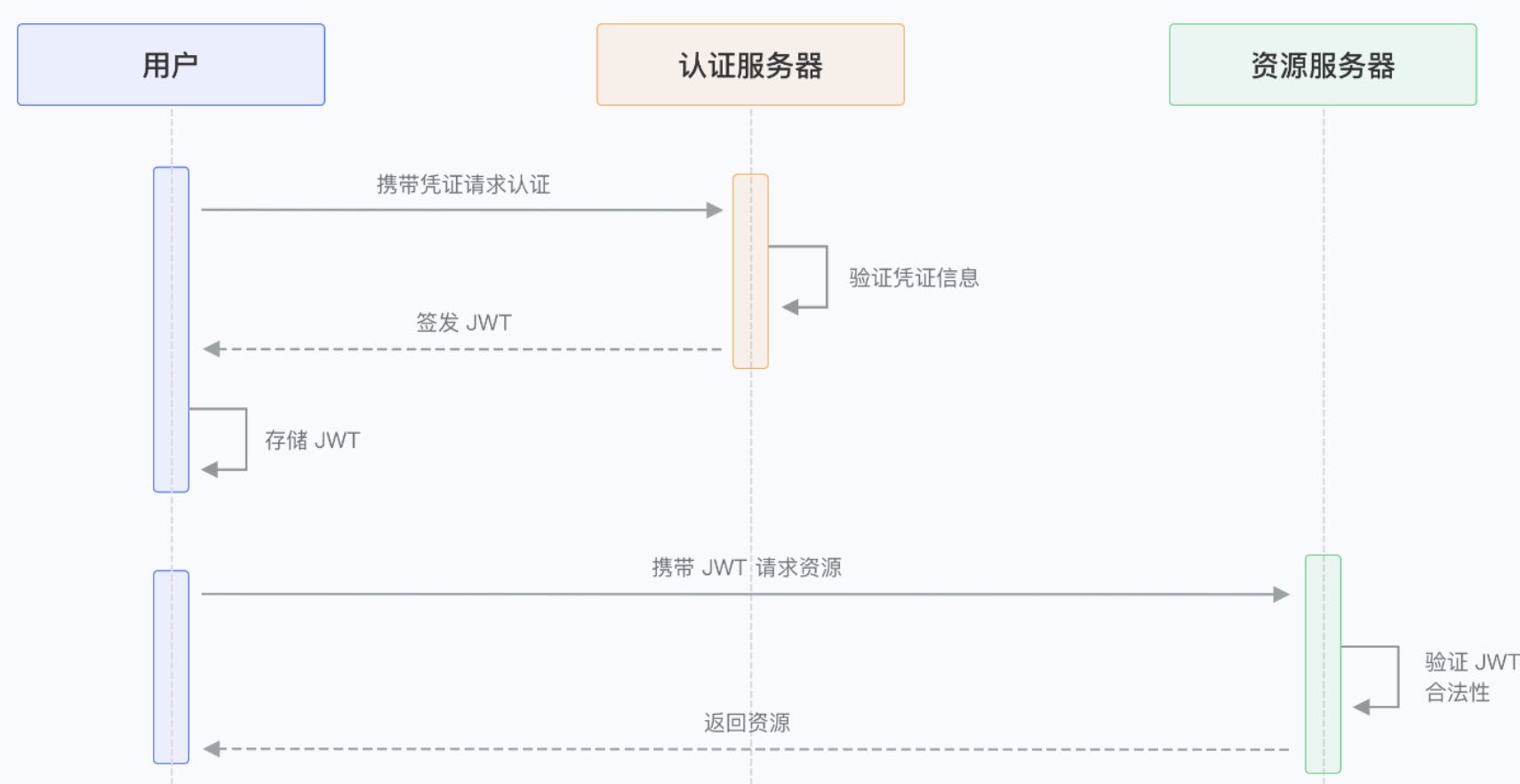想写一下JWT的原理和在nestjs中的使用,不过没时间总结,先随便记点什么
Reference
- https://wdk-docs.github.io/nest-docs/security/authentication
- https://docs.nestjs.com/guards
JWT

Guards
@nestjs/passport 是最node.js中最流行的身份验证库。
Guards在客户端和路由模块之间,来决定一个请求是否会被路由处理器处理。
自定义Guards:扩展内置类AuthGuard并在子类中重写方法:
1
2
3
4
5
6
7
8
9
10
11
12
13
14
15
16
17
18
19
20
21
22
23
24
import {
ExecutionContext,
Injectable,
UnauthorizedException,
} from '@nestjs/common';
import { AuthGuard } from '@nestjs/passport';
@Injectable()
export class JwtAuthGuard extends AuthGuard('jwt') {
canActivate(context: ExecutionContext) {
// Add your custom authentication logic here
// for example, call super.logIn(request) to establish a session.
return super.canActivate(context);
}
handleRequest(err, user, info) {
// You can throw an exception based on either "info" or "err" arguments
if (err || !user) {
throw err || new UnauthorizedException();
}
return user;
}
AuthGuard的入参是一个策略,它定义了实际的身份验证逻辑。
每个Guard都必须实现一个canActivate,这个函数返回值为boolean值,表示是否允许当前请求。
ExecutionContext
canActivate() 函数只接受一个参数,即 ExecutionContext 实例。
ExecutionContext(执行上下文)是在NestJS中用于执行请求处理的上下文对象。它包含了与当前请求相关的一些信息和操作,包括请求对象、响应对象、路由处理方法等。
- getRequest(): 获取请求对象的引用。
- getResponse(): 获取响应对象的引用。
- getClass(): 获取当前处理方法所属的类。
- getHandler(): 获取当前处理方法的引用(即路由处理器)。
- switchToHttp(): 返回一个特定于HTTP的上下文,允许访问请求对象、响应对象和参数等。
- switchToRpc(): 返回一个特定于RPC的上下文,允许访问消息对象、连接和参数等。
- switchToWs(): 返回一个特定于WebSocket的上下文,允许访问连接对象、数据和参数等。
JwtService
在NestJS中,jwtService是一个由Passport JWT策略提供的服务,用于处理JSON Web Tokens (JWT) 的生成和验证。
jwtService.verify是用于验证JWT令牌的方法,入参为token,出参为{"username": "", "sub": "", "iat": 1726500940, exp: 1726587340}。
sub为签发时间, exp为过期时间。
@UseGuards()
Guards控制的范围可以是controller, method, global的。
@UseGuards() 用来应用各类Guards:
1
2
3
@Controller('cats')
@UseGuards(RolesGuard)
export class CatsController {}